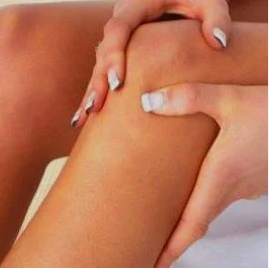
Knee pain is a common symptom that signals problems in the body – the appearance of joint disease or increased load on the foot.
It is difficult to find a person who never pain in the knees for a certain period of life. Discomfort, or click pain of varying intensity in the knee joints occurs in adults and both children, because of several reasons. The older a person becomes, the greater the likelihood of various diseases, the first symptom is pain in the knees. This is due to the fact that the age peculiarities of the body: slow metabolism, the wear of the cartilage, joining the other problems of the musculoskeletal system, vessels, nerves.
Due to the complex anatomical structure and the structures of many you will experience large loads, and often overloads, the knee joints are very vulnerable. Any damage to any structural element, for example, bursal, leads to a violation of the motor activity and the knee, therefore, the pain syndrome. Ligaments and all menisci are considered vulnerable, he hurt, 80-85% of cases.
The anatomical structure of the knee
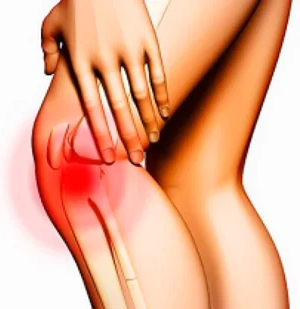
The knee comprises the knee joint, the distal femoral head and two condyl technologies podmienkami, tibial bones, muscles, nerves, blood vessels, tendons, the patella (kneecap), the bag and the joint menisci.
The knee joint is one of the major joints of the body. Top Ah the femur. The articular surface of the lateral (outer) and medial (internal) condyl technologies articulate with the patella and tibia. The meniscus, which is the connective tissue, cartilage act as shock absorbers for the joint. Thank you, is the rational distribution of body weight on the tibial plateau increases and the contact stability. A thin, two-headed, paliperidonesee other muscles sinhroniziruete capsular and ligamentous structures providing the motor function of the knee joint.
Elementit knee is connected to several ligaments. Inside the joint are two cruciate ligaments – the front and rear. Podmyshalsky beder a bone are connected and the bones of the lower leg fibular collateral ligament. Oblique popliteal ligament is located behind the Bursa of the knee joint. From a number of joint cavities secrete the most important of the synovial membrane of the capsule does not communicate with the joint. The blood of the son of supply of the knee is due to the network of blood vessels, and innervation – nerve fibers.
Causes of knee pain
There are many causes of pain in the knee joints, which can be divided into several groups.
Traumatic lesions of the knee elements:
- A knee injury. As a result of rupture of blood vessels paid, local bleeding in the soft tissues of the joint. Redness, swelling, nerve damage leads to pain, difficulty in movement.
- Full or partial rupture of ligaments. Often diagnosed with a partial violation of the integrity of the internal lateral ligament, due to excessive eversion of the tibia outwards.
The outer ligament torn is less than the internal. This is due to the strong deviation of the tibia inwards exposed legs, for example. Cruciate ligament inevitably accompanied by hemarthrosis.
Complete rupture of both ligaments is often associated with damage to the nerves, tear of the internal meniscus. This leads to injury excessive movement of the knee joint, accompanied by severe pain, whose intensity depends on the extent of the rupture.
- Hemarthrosis of the knee joint – the shedding of the blood of the son of the joint cavity. Traumatic and Sometimes non-traumatic nature. Traumatic hemarthrosis paid when the meniscus ruptures, complete or incomplete rupture of ligaments, articular fractures, contusions to the knee area. Non-traumatic is one of the alternative symptoms of diseases characterized by increased fragility of blood vessel walls, or violation of blood the son of the coagulation system. These are mm. hemophilia, scurvy, severe forms of hemorrhagic diathesis. Accumulated in the joint cavity compresses the blood tissue, disrupting blood flow to them. A special pigment – hemosiderin – negative effect on the ligaments, hyaline cartilage, synovial bag, which leads to loss of elasticity. The defeat of the joint Result is that the Bursa swelling of the fibers increased and the production of synovial fluid. The result of repeated comes and bleeding degeneration of joint destruction.
- Knee miniscope – a violation of the integrity of the menisci of the knee joint. The lateral shape is damaged outer meniscus, when the medial internal. This is one of the most common, but difficult to diagnose injuries of the knee joint. Table of the disease are not accompanied by unnecessary athletes intense workouts, but also ordinary people. A meniscus tear can occur due to sudden unusual movement when turning the body, bare feet, a strong blow to the knee.
- Patella luxation – the abnormal displacement of the patella. Trauma is diagnosed in up to 0.7% of cases of total dislocation. Often paid a dislocation of the external, rarely internal, very rarely vertical or torsional. In the event that the incomplete dislocation of the patella is assigned to the lateral (outer) condyl technologies, while the full outside of the lateral condyle.
- Open or Closed fractures, the knee joint, the upper part of the leg bone, or the lower division beder a bones. Such injuries are often combined with damage to the soft tissues of the knee, which causes massive bleeding, excessive mobility, the knee area, its shape changes.
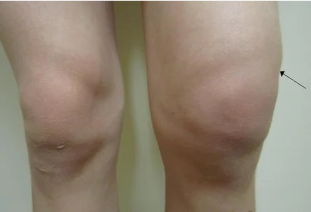
Inflammatory and degenerative-dystrophic diseases of the joints of the parts of the knee:
- Arthritis – inflammation of the knee joint. Similar to the mechanism of development of pathology observed in osteoarthritis, ankylosing spondylitis, rheumatoid arthritis, gout (the deposition of urate in the joints).
- Osteoarthritis (gonarthrosis) damage to the knee joint of non-inflammatory nature, affecting the structure and all of its caused severe degenerative changes.
- Bursitis inflammation of the synovial membrane of the Bursa leads to pain flexion-extension movements of the knee.
- Periarthritis of the knee tendons – inflammation of the capsule of the goose foot, knee tendons, muscles and joint ligaments surrounding. Most often the Pain occurs, when descending stairs, especially with heavy cargo, and focuses on the inner surface of the knee.
- It chondropathy of the patella , degenerative-necrotic changes of the articular cartilage (back) surface of the patella. The degree of destruction can be from different regions of the lung to soften the cracks and finish wear.
- Chondromatous chronic is a serious disease, which is caused by dysplastic process islet regeneration area of the membrane of the joint shell of cartilage gondrom. It is not excluded, a separate ossification of the cartilaginous bodies.
- A Baker's cyst – the formation of tight elastic, rounded tumor masses in the popliteal fossa, which is located on the opposite side of the patella. The cyst is clearly visible in the unbent condition of the knee. Cause discomfort, pain in the popliteal area. Significant size and compress the vessels, the nerves, leading to disruption of innervation leads and blood circulation.
- Goff is a disease – a disease, the destruction involved and the further degeneration of the adipose tissue located in the knee joint. Pinching, swelling and other injuries of fat cells – adipocytes – end-replacement of dense connective tissue. Finally, the buffer function of the "fat pillow" is broken, a very fatty tissue become can not perform the role of shock absorber.
- Disease Osgood–Schlatter disease, which is characterized by necrosis of the lumpy part of the lower leg. Diagnosed in adolescents 10-18 years participating in the sport. Below the patella it looks painful nodule without treatment leads to restrict the movement of a leg or total immobility, and malnutrition of the muscles.
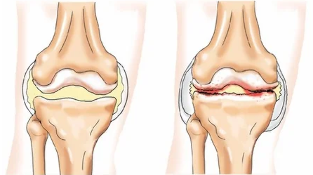
Diseases, where it is possible irradiation of pain in the knee area:
- Coxarthrosis of the hip – chronic damage to the hip joint, accompanied by and progressive degeneration of degenerative changes. Often, the pain extends, unfortunately, along the outer surface of the femur to the knee or below.
- Neuropathy of the sciatic nerve is a non – inflammatory damage to the nervous system as a result of compression of the compression or spazmirovannah blood vessels. This becomes the nerve of the foot, from the lumbar region, and passes through and pelvic tailbone. Blockade at any stage leads to disruption of sensation or throbbing pain.
- Fibromyalgia – extra-articular lesions of soft tissues non-inflammatory nature, the totality of symptoms, such as joint pain, muscle weakness, depression, etc.
Some systemic diseases, which leads to pain in the knees:
- Osteoporosis is a disease of the skeletal system, chronically progressive course, the mineral composition will change and bone density. "Leaching" calcium from the bones leads to their fragility. The process associated with sore or aching limbs.
- Tuberculosis of the bones. Tuberculosis, changes in the area of bone leads to constant severe pain.
- Osteomyelitis is a disease of infectious-inflammatory nature, which affects all the structural elements of the bones. The result of both specific, such as tuberculosis, and nonspecific, often whitish, osteomyelitis comes to the skin redness, swelling, pain in the bones and the local muscles, a feverish temperature.
- Some infectious diseases. When Reiter's syndrome, in addition to the urogenital tract involvement and eyes, affects the joints. One of the manifestations of Lyme disease is joint pain.
The type of pain in the knees
Depending on the etiology, nature and intensity of pain can be different.
- Sore. Arthritis, osteoarthritis.
- Pungent, strong. Fractures of elements of the knee ligament rupture, acute bursitis, a knee injury, aggravation of the miniscope, deforming osteoarthritis.
- Pulsating. When you start deforming osteoarthritis, meniscus injury.
- Drill. Osteomyelitis.
- Stupid. Bursitis, chronic Legg.
- Burning. When compression of the sciatic nerve, tuberculous process in the bone.
- Shooting. With the pinching of the nerve trunk.
- Pain when walking. When the Baker's cyst, bursitis, arthritis, gonarthrosis, periarthritis.
- The pain alone. Gout, arthritis.
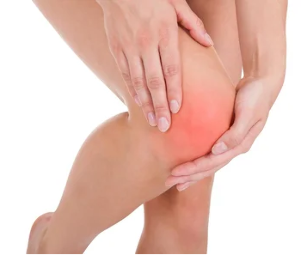
Diagnosis of diseases causing pain in the knees
Fizikalna research:
- complaints and medical historian;
- visual examination, palpation of the knee.
Laboratory tests:
- biochemical and clinical blood tests;
- serological study of the blood of the son;
- immunological blood;
- rheumatologic samples;
- bacteriological analysis of synovial fluid.
Invasive instrumental methods:
- endoscopy;
- puncture of the nerves;
- needle biopsy of bone.
Non-invasive diagnostics:
- radiography of the knee joint;
- densitometry;
- ultrasound examination of the joint;
- MRI-CT-or-description.
Treatment knee pain
Pain If one or both the knee non-traumatic nature, the occurrence, should go to the first therapist, who, on the basis of the patient's complaints and results the objective of the study is sent to a specialist – orthopedist, rheumatologist, neurologist or phlebologist. Any knee injury, men have to contact the surgeon or the traumatologist-the orthopedist.
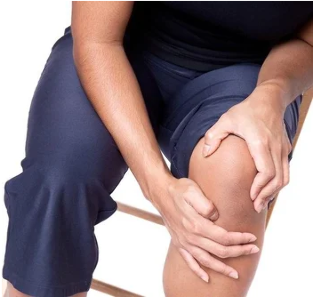
Treatment in each case is different, depending on the cause of the pain, i.e. the injury or illness. Each disease has its own treatment program. But first the patient must observe a few General rules:
- significantly reduce the duration of the walking foot and have been throughout the day;
- athletes temporarily (until recovery) give up training and ordinary people running or jumping;
- the pain completely kun to abandon the movement, put on the locking knee elastic bandages;
- use a brace or bandage to immobilize the knee joint;
- a cold place when injuries trauma exposure.
Rheumatoid arthritis, psoriatic arthritis, systemic autoimmune disorder in serious need of comprehensive treatment for many months. The basic treatment consists of immunosuppressive drugs, nonsteroidal anti-inflammatory hormonal drugs and, gold preparations, etc.
The treatment of bursitis using painkillers and anti-inflammatory medication. If signs of an infection, a course of antibiotics. Therapeutic puncture of the bag completely to remove excess fluid synovial poi cavity and/or corticosteroids. Chronic inflammation of the Bursa helps to get rid of surgery – surgical bunion surgery.
When deforming arthrosis of the effective intraarticular injections of corticosteroids long-term use of anti-inflammatory drugs and chondroprotectors. Pain locally appointed compresses Dimexidum, or bischofite, creams gels and which is inflammation. Help massage therapy, occupational therapy, therapeutic exercises. Serious damage to the knee will require surgery – hip replacement surgery.
Treatment of osteoporosis is to take bisphosphonates, calcitonin, calcium, vitamin D, etc.
Treatment of the meniscus tear can be or conservative surgical procedure. Conservative treatment consists of analgesics, Nsaids, hyaluronic acid, chondroprotectors. But first produce reposition contact.
A variety of surgical procedures:
- meniscectomy;
- partial (partial) meniscectomy;
- transplantation of the meniscus;
- endoscopy;
- arthroscopic stitching of the torn meniscus.
In any case, injuries of the knee after treatment is very important to rehabilitation, which should take place under the supervision of a physical therapist or podiatrist. The doctor makes an optimal restoration of joint function. The main methods of postoperative considered rehabilitation and massage medical gymnastics. Also effective lessons on special simulators, gradually developing knee joint.












































